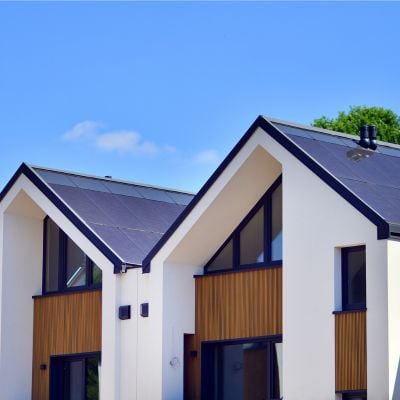Falling for potential
McDaniel wasn’t just chasing financial freedom — she was sprinting toward it. As a devotee of the Financial Independence, Retire Early (FIRE) movement, she embraced extreme saving and strategic investing to achieve early retirement. The premise is to save aggressively, invest wisely and eventually live off small withdrawals from a carefully built portfolio — typically around 3% to 4% — or supplement with part-time work.
For McDaniel, real estate was her golden ticket. In her early 30s, she started saving nearly 50% of her income to build a life of freedom and flexibility.
“I was very confident when we closed the deal. But it wasn’t long thereafter that I literally started having panic attacks wondering, ‘What in the world did I get myself into?’” McDaniel admitted. While real estate can be a smart path to financial independence, it’s not exactly a fairy tale. Market shifts and unforeseen expenses can turn a dream investment into a cautionary tale.
Invest in real estate without the headache of being a landlord
Imagine owning a portfolio of thousands of well-managed single family rentals or a collection of cutting-edge industrial warehouses. You can now gain access to a $1B portfolio of income-producing real estate assets designed to deliver long-term growth from the comforts of your couch.
The best part? You don’t have to be a millionaire and can start investing in minutes.
Learn MoreAn unexpected surprise
What seemed like a promising investment quickly turned into a financial nightmare. The charm of the apartments faded fast when ceilings began caving in and bullet holes in the windows hinted at deeper structural and safety issues.
Only after closing the deal did McDaniel realize she had skipped a crucial step — an environmental hazard assessment. To bring the properties up to livable standards, she had to pour in far more money than she’d planned. She sold another investment property for $175,364, added $8,000 from other income streams, secured a $202,725 interim construction loan and took out a permanent mortgage of $290,710.
When the villas were fully restored 18 months later, the total cost had ballooned to $729,885.
McDaniel’s experience highlights a hard truth about real estate investing: what looks like a great deal can quickly become a financial drain. Rushing into an investment without fully evaluating the risks can end up costing far more than the purchase price.
Despite the setbacks, by 2024, the villas were fully booked for approximately 1,300 nights at an average rate of $143 per night, generating a total revenue of $224,133 for the year.
Getting into the market
Real estate can be a great investment, but not everyone wants to deal with renovations, maintenance or surprise expenses that eat into profits. Fortunately, there are ways to tap into the market without purchasing a property outright.
One option is investing in fractional shares of vacation and rental properties, sometimes for as little as $100. This allows investors to gain exposure to real estate without the overhead costs or financial risks associated with full ownership.
For those looking to make a larger investment, commercial real estate can offer strong returns. According to Nolo, commercial properties typically yield an annual return of 6% to 12% of the purchase price, making them an attractive option for portfolio diversification.
The richest 1% use an advisor. Do you?
Wealthy people know that having money is not the same as being good with money. Advisor.com can help you shape your financial future and connect with expert guidance . A trusted advisor helps you make smart choices about investments, retirement savings, and tax planning.
Try it now








